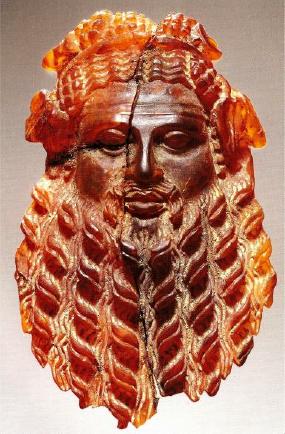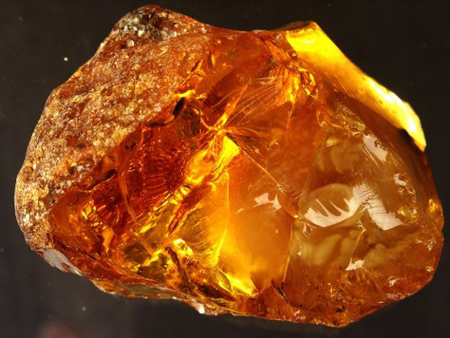Oh, listen in the evenings,
When the sea is restless
And sprays the shore with amber
The depths unseen palm...
Maironis (Lithuanian poet, 1862 - 1932)
For many centuries, cultures acquainted with amber wondered what this beautiful gift of nature was and how it originates. True to the customs of the times, many myths and legends resulted from attempts to explain the origin of this mysterious substance. Most of the folklore was simply carried from generation to generation by word of mouth. Some legends found their way in literature of antiquity and are preserved for us today in their poetic versions.
It was the Roman poet
Ovid who recorded the prevalent Greek myth, the
Tears of Heliades, attributing divine origin to amber. The Greek legend recounts the adventure of Phaethon, who grew to young manhood without knowing that one of his parents was immortal. Prevailing upon his mother, Clymene, to inform him who his father was, Phaethon was astonished to discover that he was the child of the sun god, Helios. Doubting his mother's word, he sought out the Sun God to seek proof of his parentage.
Phaethon travelled to India, where Helios' palace stood splendidly, glimmering with precious stones and gold. Upon entering the hall, the biy was blinded by light from the Sun God and found it impossible to see. But upon seeing Phaethon, Helios dimmed his radiance and commanded Phaethon to approach.
Phaethon demanded: "Helios, if you truly are my father, what proof will you give so I may be known as your son? "
"You deserve not to be disowned, my son. Whatever you ask I will grant you", promised Helios.
Thereupon the boy asked to be permitted for one day to drive the flaming chariot of the sun across the arch of the heavens.
Knowing the great dangers involved, Helios offered Phaethon other gifts, but possessing the willfulness of youth, Phaethon could not be deterred. With great reluctance, Helios gave his consent.
On the appointed day, the daughters of Helios, the Heliades, helped Phaethon yoke his father's steeds to the chariots. As dawn opened the doors of the east with the stars and moon retiring, Phaethon leaped into the golden chariot. Delightedly grasping the reins of the fiery horses, he sped off to the west. Soon the palace was far behind him as the impassioned horses sprang swiftly forward, outrunning the morning breezes.
Feeling a lighter load than usual, the horses soon realized that inexperienced hands held the reins, and they ran wild, straying far from the travelled path. Seized with fear, poor Phaethon forgot his horses' names and knew not how to guide them. He dropped the reins in terror on the height and became overwhelmed with dizziness. The uncontrolled steeds dashed on without restraint, rushing hither and thither, wherever they chose. As they approached too near the Earth, clouds began to smoke, the harvest blazed, fields were parched and the rivers dried up. Even the sea shrank because of the awful heat.
Fearing the world would be reduced to ashes, the Goddess of Earth begged Jupiter to take pity and give her relief. In an effort to save the Earth, Jupiter launched a thunderbolt at Phaethon, causing him to fall headlong and flaming into the Eridanus River. Finding him dead, the river nymphs reared a tomb to Phaethon's memory along the shore.
Lamenting Phaethon's death, his sisters, the Heliades wept bitterly. As punishment for encouraging Phaethon's reckless ride and for assisting him in yoking the steeds to the chariot, the Heliades became rooted to the spot and changed into poplar trees, from which tears continually fell. These tears became hardened by the sun and turned into amber.









